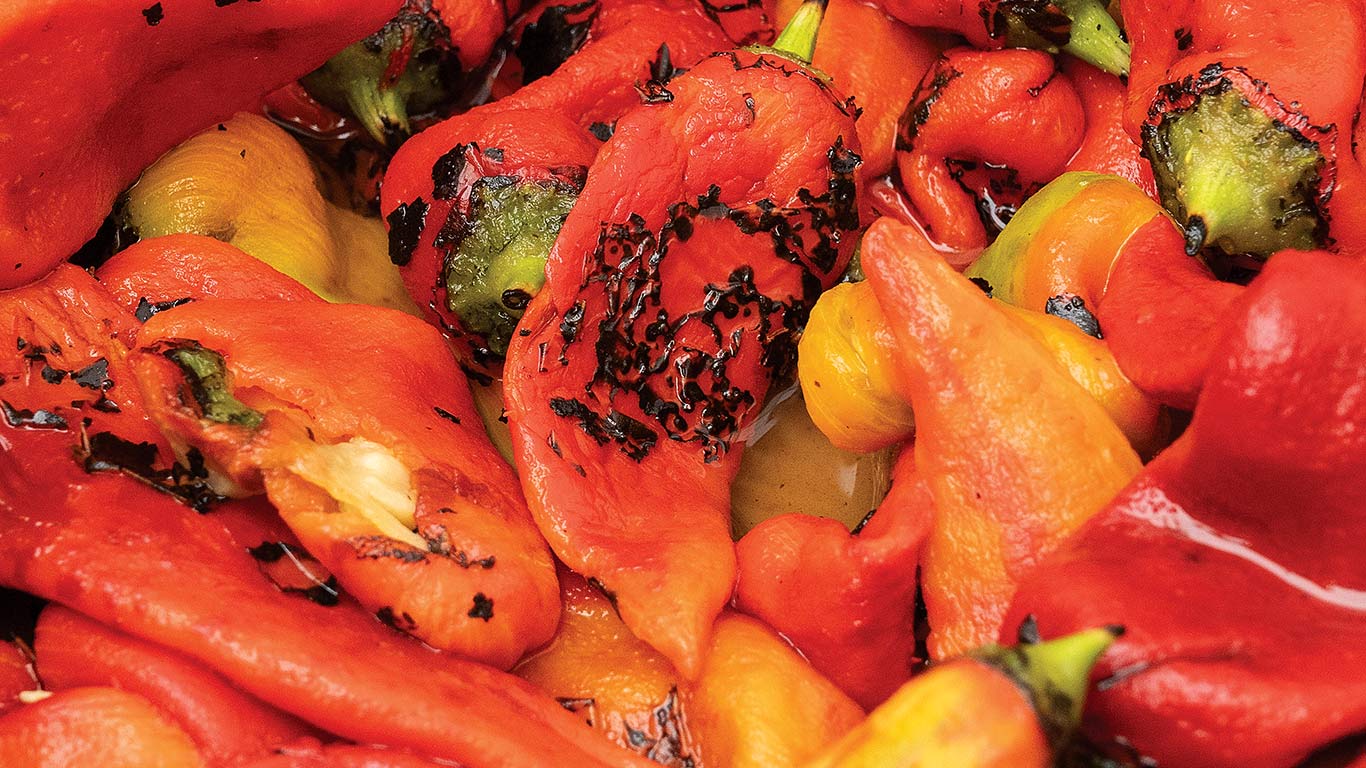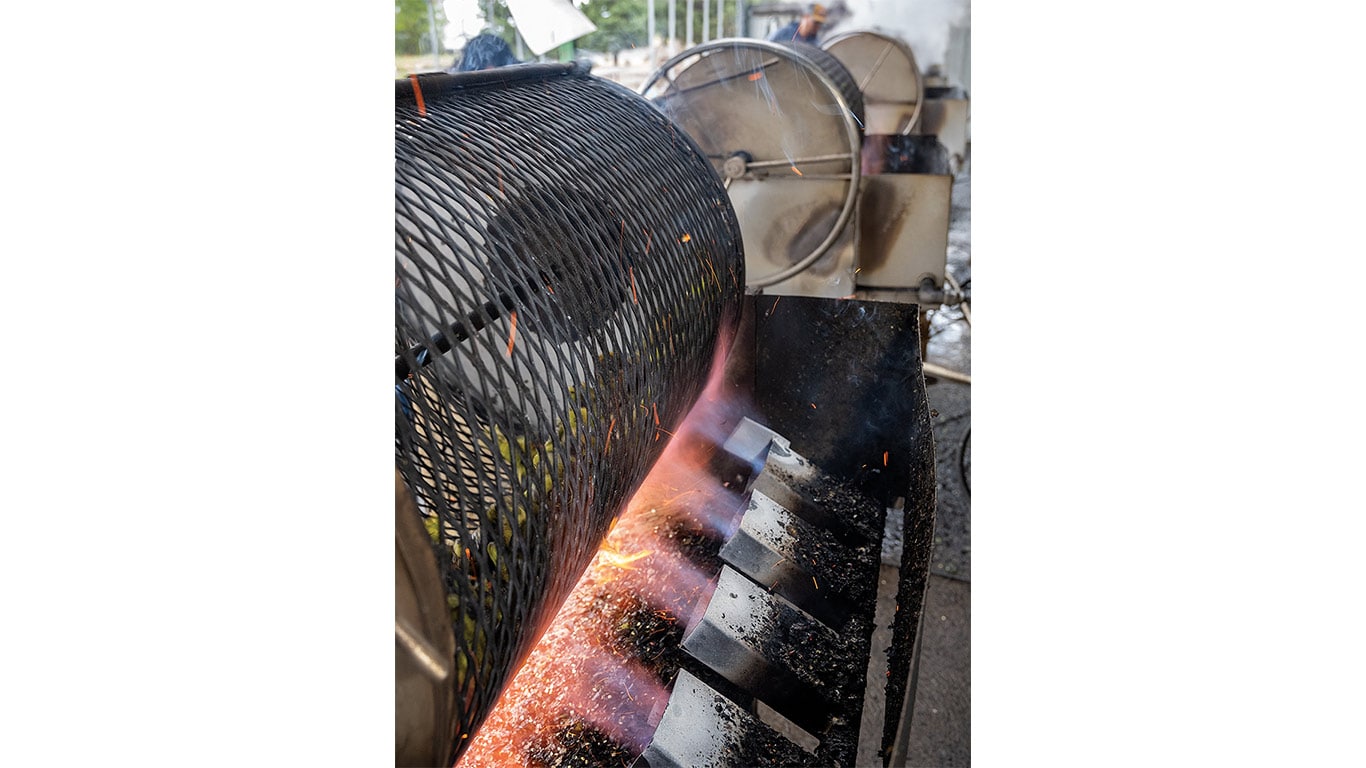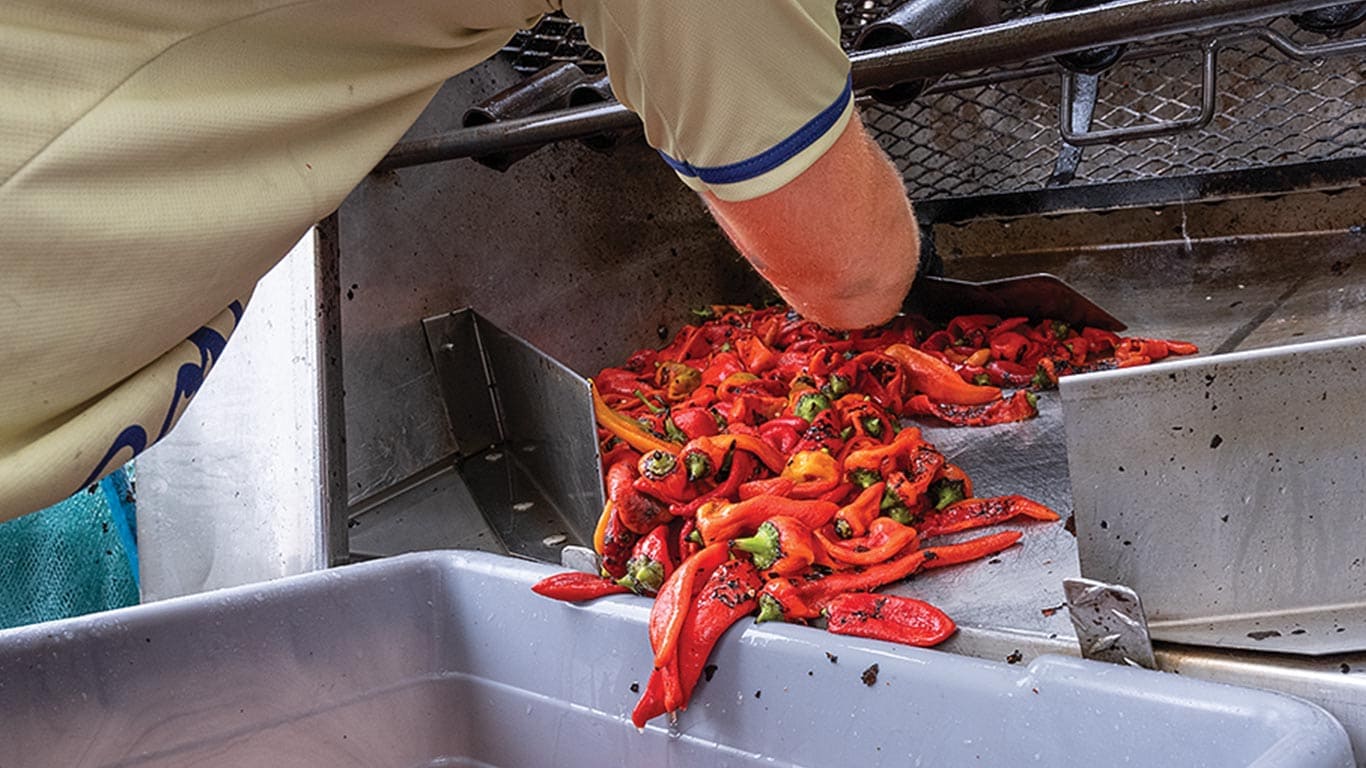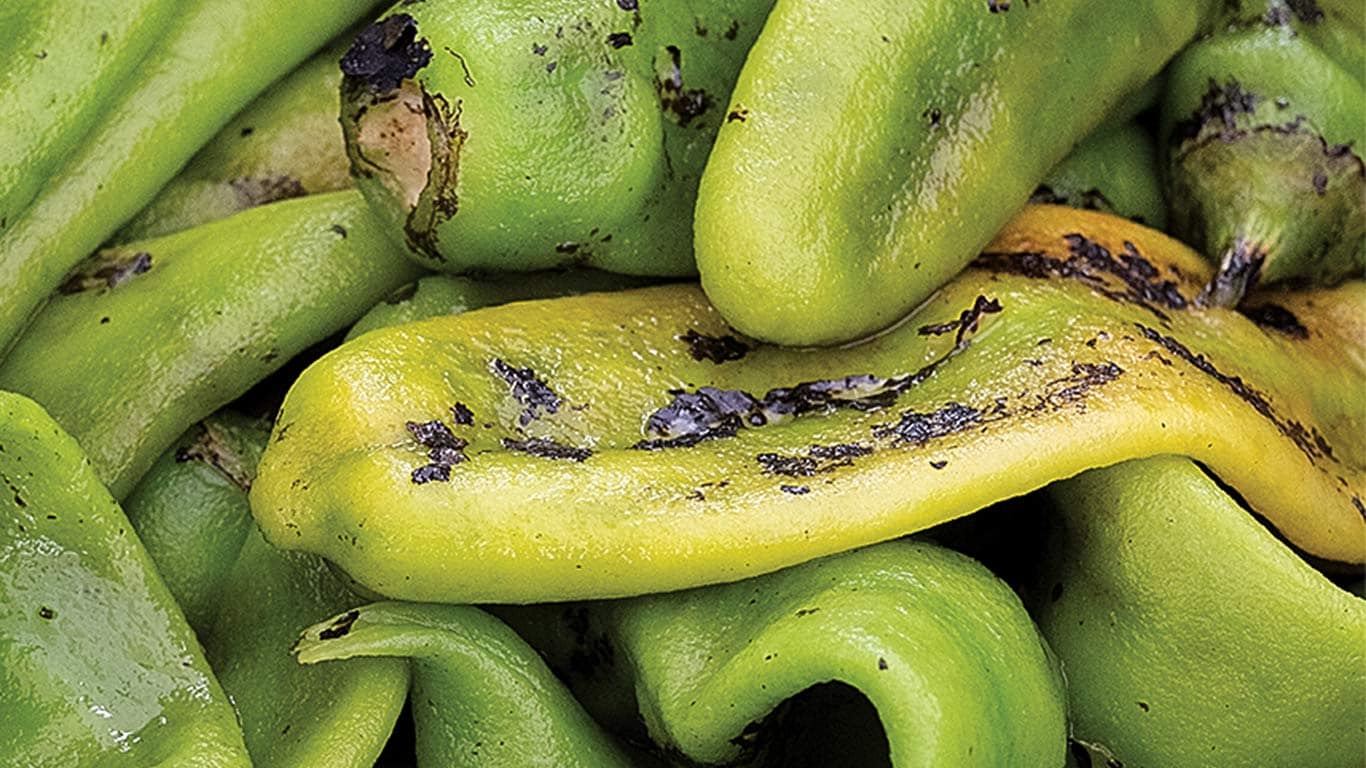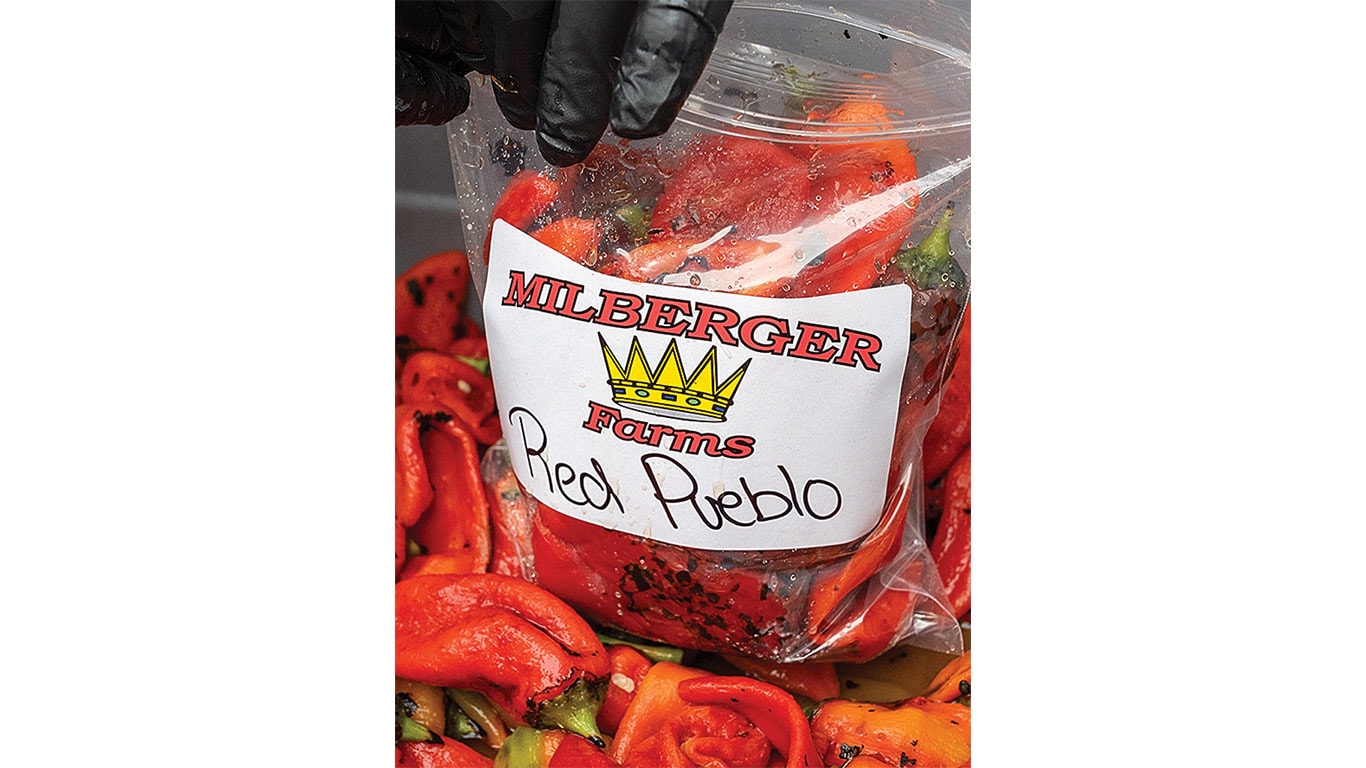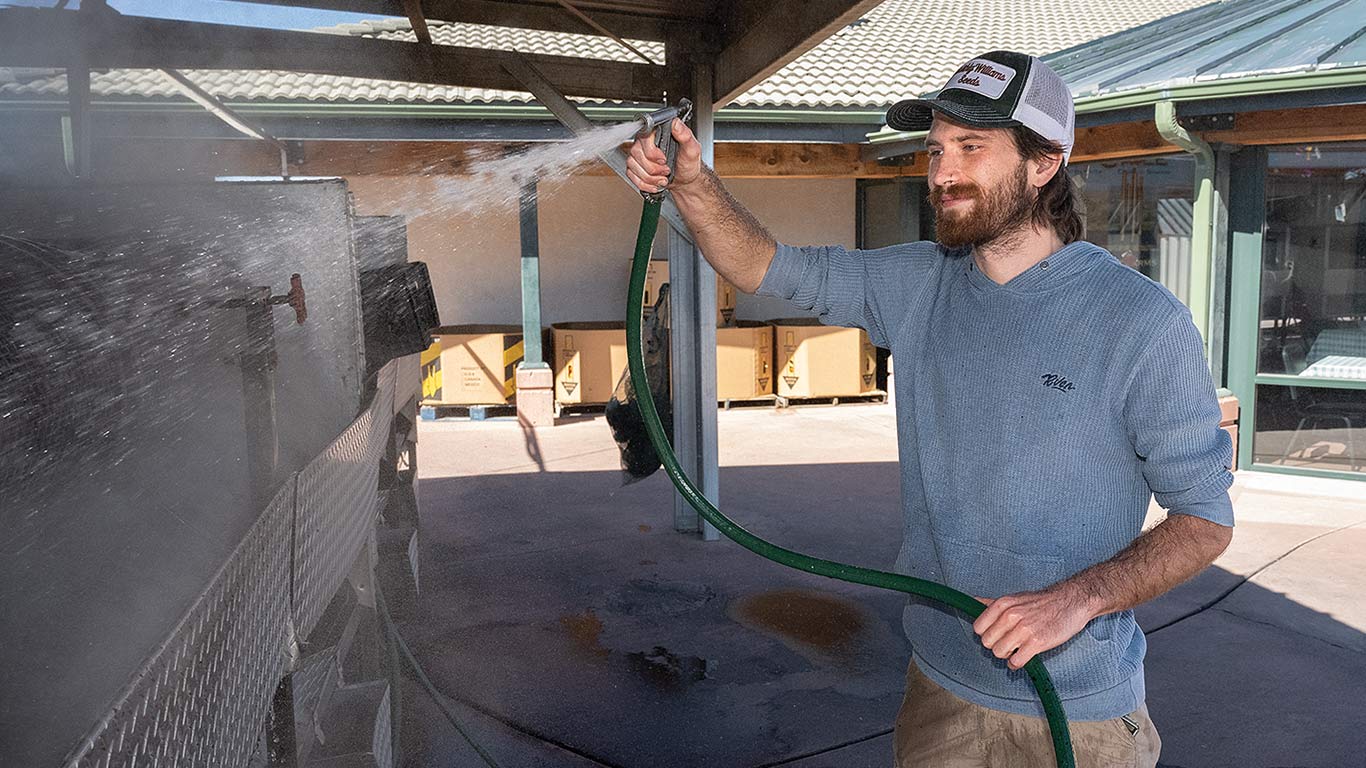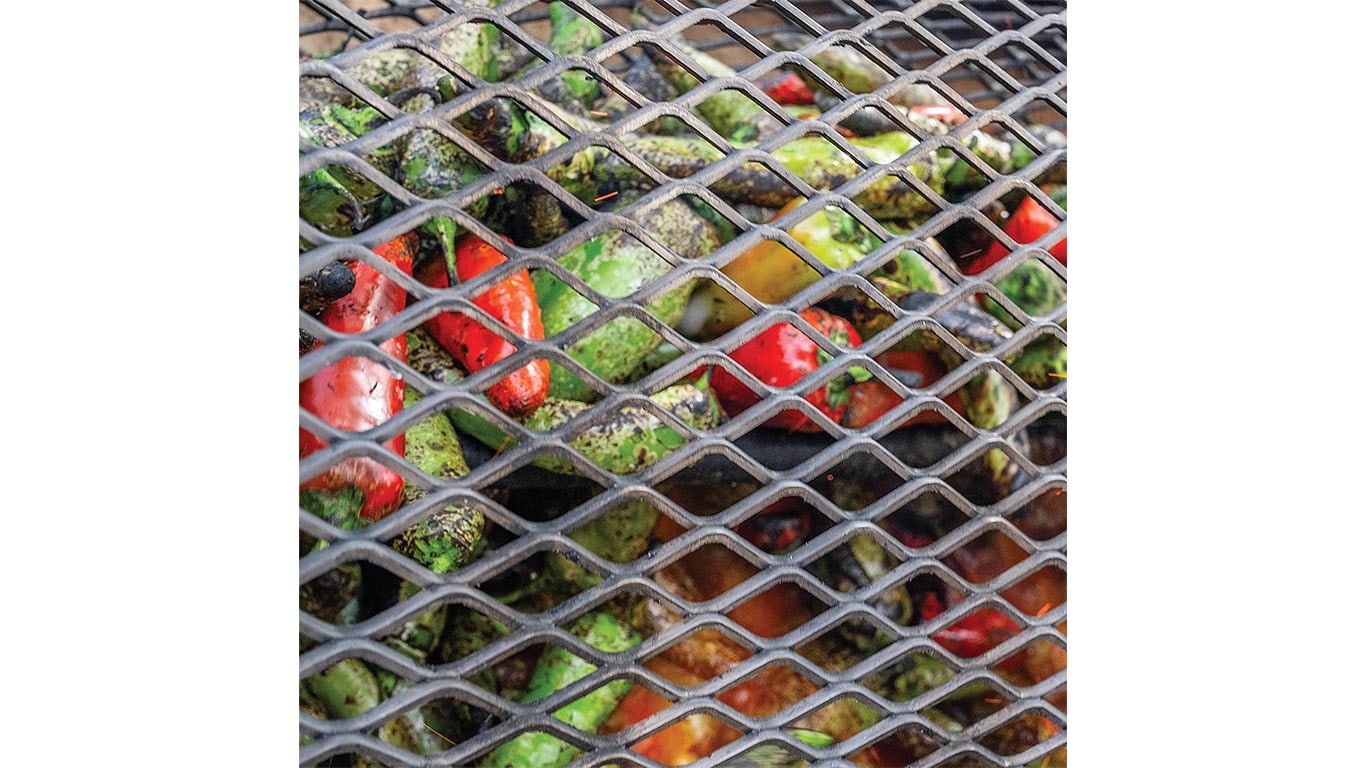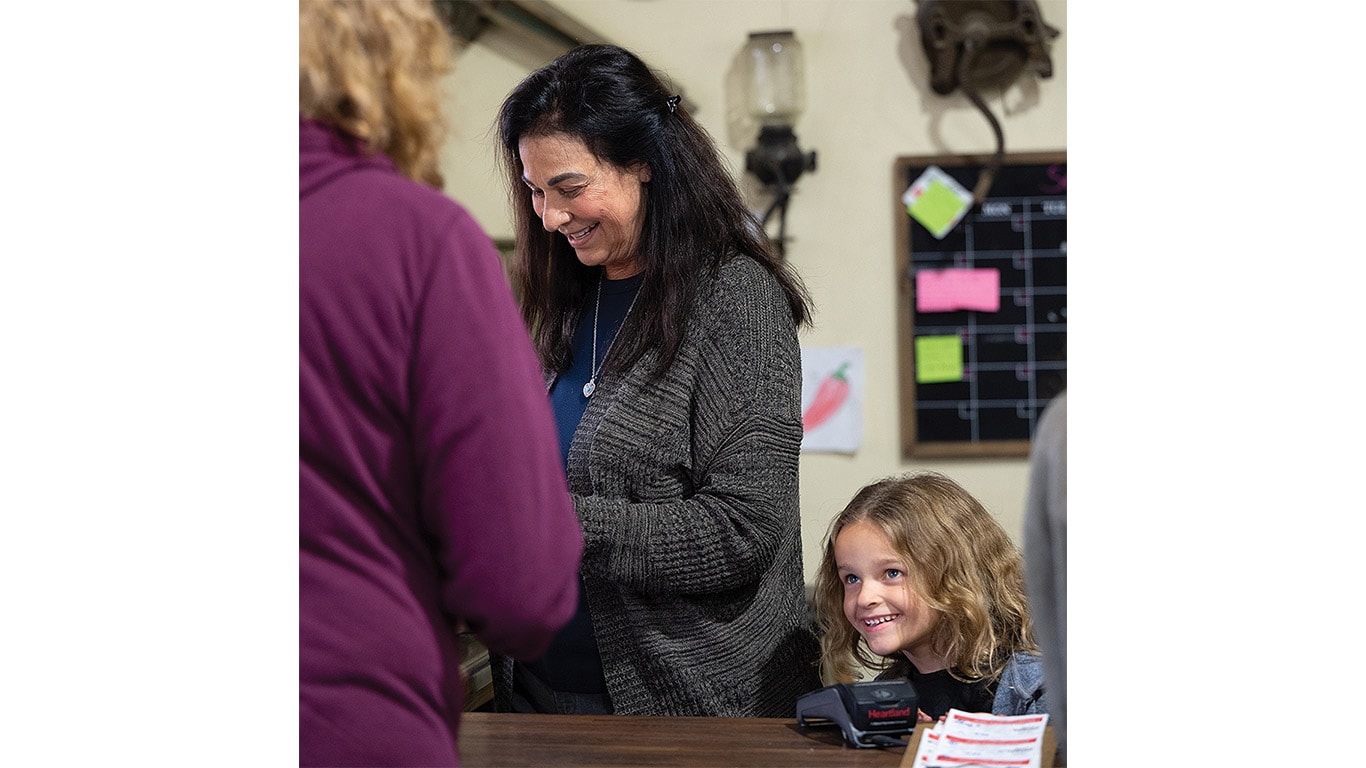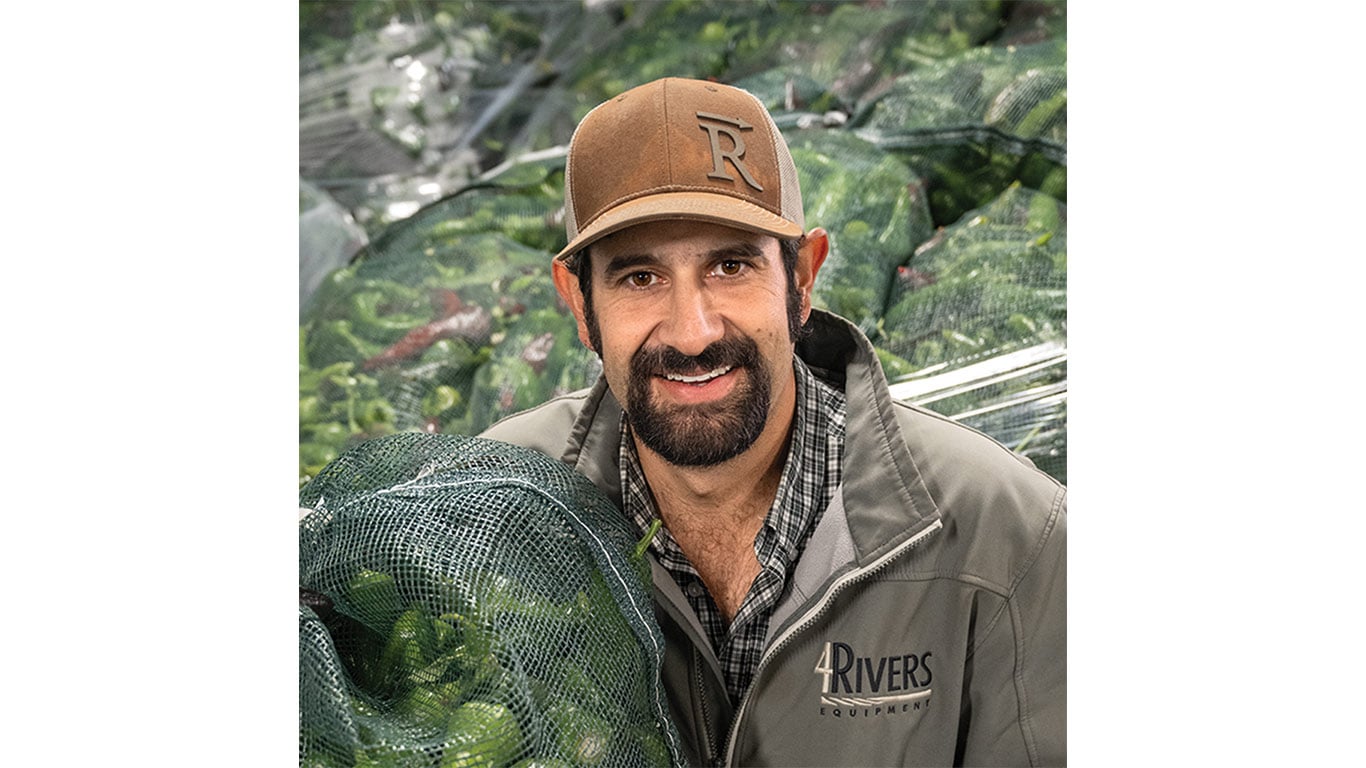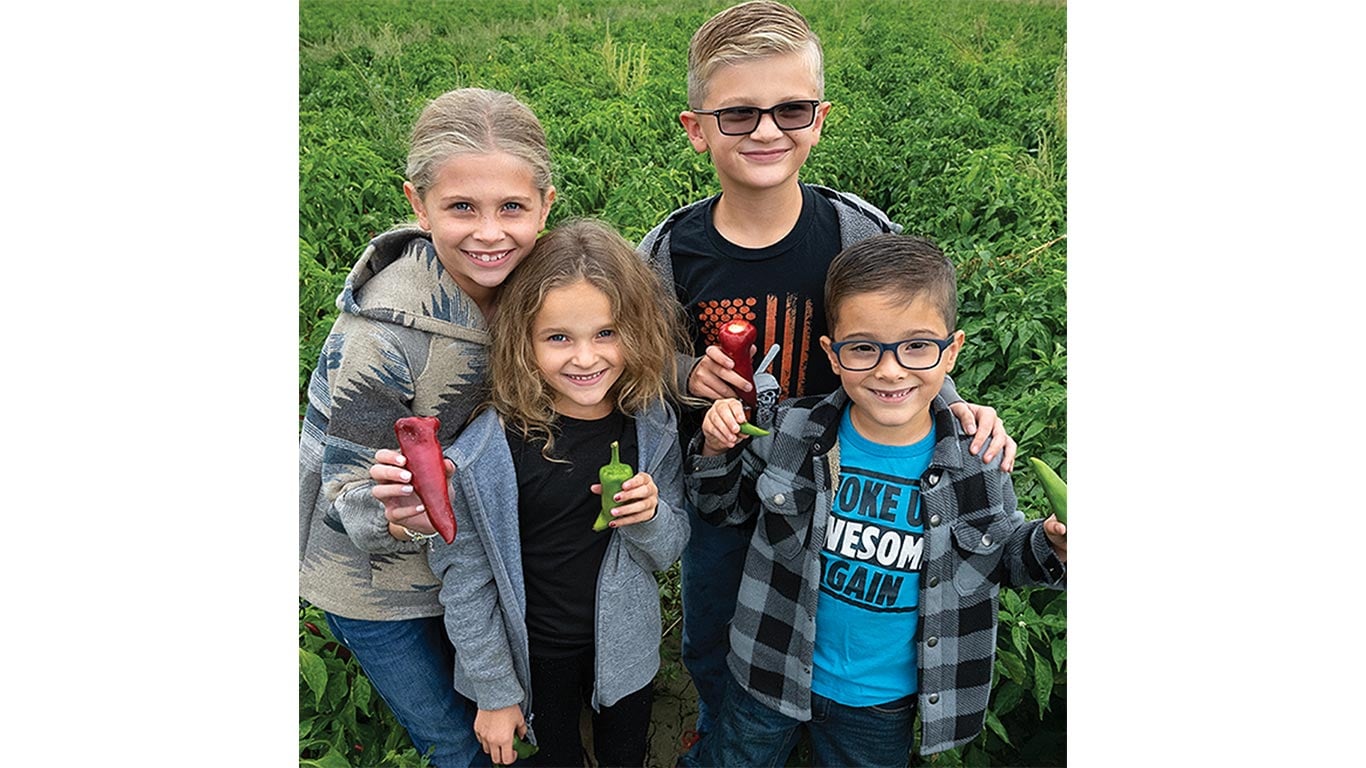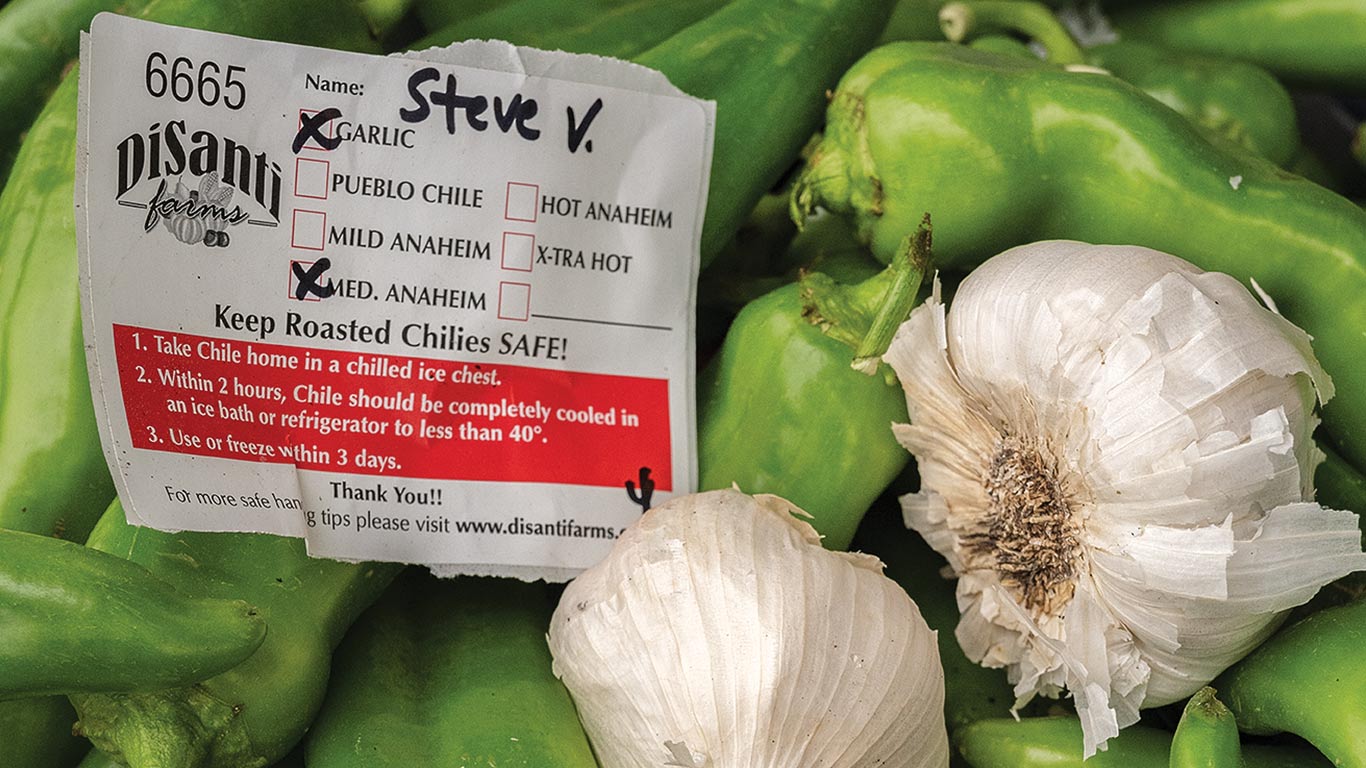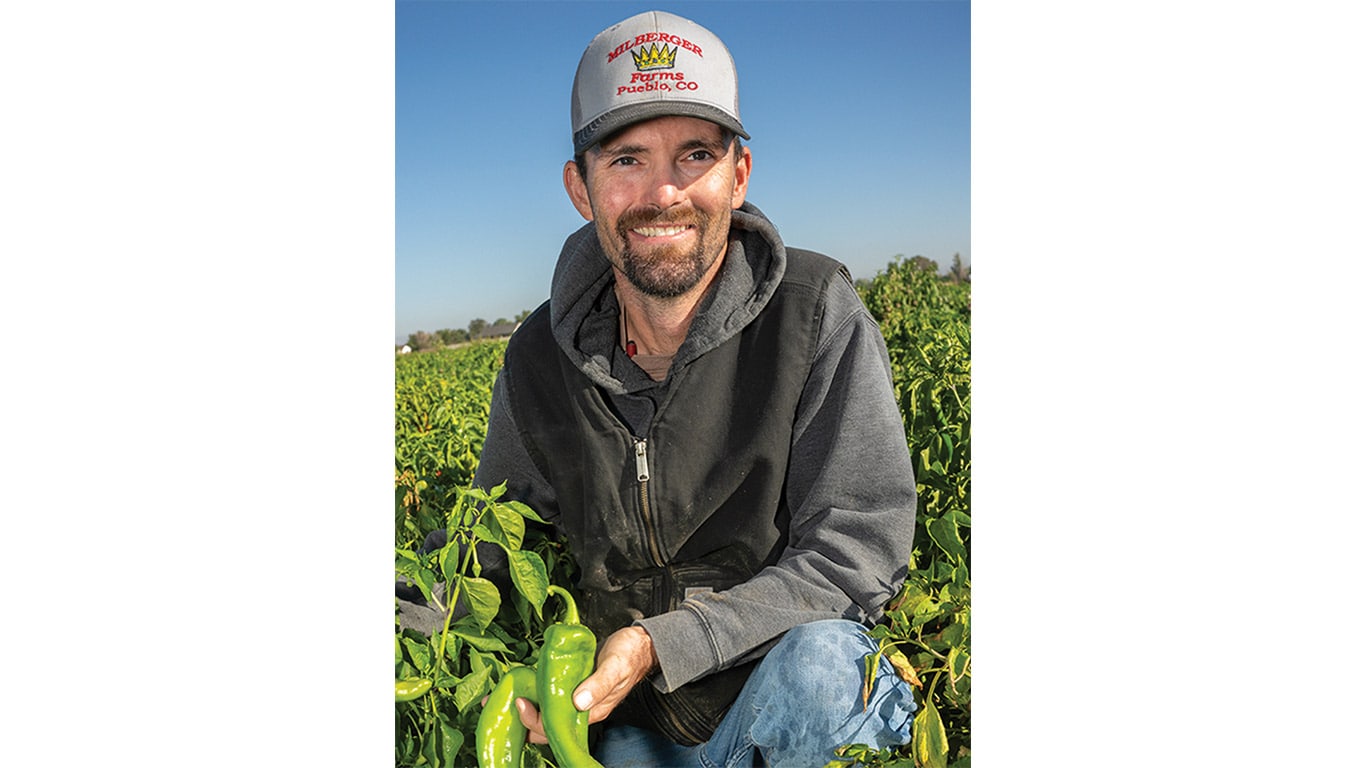Agriculture, Specialty/Niche September 01, 2025
Heating Up Summer's End
Pueblo chile farmers roast up spicy delights.
by Martha Mintz
Propane burners roar, blistering and blackening the shiny taut skins of red and green Pueblo chile peppers. Flames lick at the potent pods as they tumble chaotically in metal mesh roasting cylinders. When the flames are extinguished, the piping hot charred peppers are doused with a stream of water. Sweet, smoky, pungent pepper aromas burst forth in a dramatic hiss of steam.
As charred casings are washed away, they reveal the more muted, but intensely flavorful flesh of the roasted peppers. Practiced hands funnel them into plastic bags, giving them a quick twirl before handing them over to a pleased and eager patron.
It's a scene repeated time and time again from late July through early October on farms stretching east of Pueblo, Colorado, in the Arkansas River Valley. While the area has a fine reputation for an array of fruits and vegetables, the Mosco chile pepper has taken root. The locally bred roasting pepper helped sprout a regional specialty and tradition that draws crowds from far and wide.
Binding thread. Mike Bartolo is the plant breeder responsible for developing the Mosco variety, but he shies from accepting much credit.
"The chile is a simple plant, but I see it as a thread that binds us through time and generations. It's family and history. It transcends time to connect the past and the future," he says with great passion.
The Mosco variety is named for Bartolo's uncle Harry Mosco, a Pueblo farmer. When he passed, a sack of pepper seeds was discovered among his possessions. They were given to Bartolo who then served as the Colorado State University Arkansas River Valley Research Station manager in nearby Rocky Ford.
Bartolo's grandparents immigrated to the area from Italy. His grandfather worked as a miner, one of many immigrants from diverse backgrounds attracted to the area by work in mining, steel, and farming.
"He broke rocks to save enough money to buy a farm," Bartolo says. That farm passed to Mosco and grew the seeds that ended up in Bartolo's possession. On a whim, he planted the heirloom seeds in one of his research station plots.
Chiles have been grown in the region since water development made farming possible in the 1880s. The original chile popular in the region, the Mira Sol, likely originated in Mexico. Mira Sol is Spanish for "looking at the sun." A fitting name for the peppers that don't deign to dangle, but rather stretch their pods upward toward the hot Colorado sun.
One of the Mira Sol pepper plants in Bartolo's plot piqued his interest. The pods were bigger, meatier—perfect for roasting. He walked into the field that day as a vegetable crop specialist but walked out a pepper breeder. He spent almost a decade refining the cultivar to produce a uniform, but unique product.
"I don't like to take credit, because the Mosco pepper is the result of many hands over many generations," Bartolo says.
Above. Roasters at the DiSanti Farm's store spin nonstop on fall weekends with wait times often surpassing 1 hour. Drew Milberger washes a batch of chiles at his family's full-service farm market including a bakery and kitchen serving up fresh chile-based treats like chile macaroons and Sloppers—the region's take on open-faced sandwiches.
Simply good. Dalton Milberger and his father Shane farm 400 acres in the valley, nearly a quarter of which are dedicated to Mosco chile production.
While many of the region's peppers are sold fresh to retail or freshly roasted through farm stands, the Milbergers focus on processing. They roast, peel, and process roughly 500,000 pounds of chiles per year. Massive commercial roasters at their facility can work through a semi load of peppers per day.
The roasted chiles are packed whole or chopped and frozen for restaurant supply and retail use.
Shane says demand for Pueblo-grown peppers is sprawling.
"It's not uncommon for us to ship chiles as far as New York, Alaska, even Hawaii. People move away, but they still have chiles in their heart," he says.
Without a local tie, though, people outside the southwest aren't as certain how to eat or cook with chile peppers or roasted chiles. Dalton always looks forward to the first chiles they snag from the field each season.
"We just slice them up, fry them in olive oil and put them on bread," he says. He's also partial to pairings of chile and chocolate.
Roasted chiles make for simple but tasty fare with a bite. Shane says to mix chopped roasted chiles with olive oil, garlic, and salt.
"You let the mixture sit at room temperature for 4-5 hours. All the flavor comes alive. Then you can eat it on toast or bread, use it as a condiment, or put it in spaghetti or make a Slopper," he says.
Sloppers are regionally famous open-faced hamburgers smothered in prepared roasted green chiles. They're a big hit at the Milberger Farms' full-service market.
The Milbergers also have a big presence at the annual Pueblo Chile and Frijoles Festival held each September. The event draws thousands to sample chile-flavored delights like peanut brittle and ice cream. There you'll find the Milbergers roasting chiles for the crowds. It's all hands on deck complete with a crib for Dalton and his wife Jessica's two young children. Their older son, Nathan, (12) helps man the roasters.
Above. Red chiles bring a sweeter flavor to the roasting mix. RoseAnne DiSanti's assistant, granddaughter Claire, serves up grins at the market. Dominic DiSanti and his brother Justin (R) are 5th generation farmers. (L-R) Emma, Claire, Jasper, and Wyatt are among nine grandkids who might make up a 6th generation of chile farmers. Chiles sold fresh at DiSanti Farm's market can be roasted on-site. Roasted peppers can be a bit like coffee orders with each person preferring their own type and color of chile and level of spice. Dalton Milberger commercially roasts peppers from his family farm for restaurants and retail supply.
Fired up. Most of the chiles sold at DiSanti Farm's market are roasted. On Sunday of the festival, the rural stand is swarmed by folks waiting to collect their annual supply before traveling home.
"We have six roasters and it's still a 1.5-hour wait," says Justin DiSanti who raises 26 fruit and vegetable crops on 1,500 acres just outside Pueblo. Justin, his brother Dominic, and sister Sara Genova and their families are fifth generation farmers.
The chances of a sixth generation are strong if the excitement nine grandchildren show helping their parents and grandma RoseAnne is any indicator.
For now they mostly provide smiling entertainment for customers, but there's room for promotion. Plenty of hands are now needed to man the many roasters, but it all started with just one.
RoseAnne recalls a day in the '90s when a family friend showed up with a metal contraption.
"He backs up to the dock, pulls out this monstrous machine and said, 'This is going to roast your chiles,'" she says. She and her husband Jim didn't have a lot of faith but gave it a try. "We put a bushel of chiles in and it was just amazing. Life changing."
It was an immediate hit.
"It wasn't a slow process. Our customers went for it right away."
Traditionally, roasting chiles was an all-day, messy affair. The mechanical roasters can do the job in just seven to 10 minutes.
People buy a bushel, get them roasted at the market, and then only have to destem and core the peppers before chopping and putting them in the freezer.
One roaster became two, then four, now six roasters work constantly during chile season. They've tweaked the design to incorporate stainless steel and handles that don't get piping hot.
"I used to roast with welding gloves. My husband brought me some beautiful royal blue roasting gloves one day and I was so excited. A customer that was watching said, 'Lady, you need to get a life,'" RoseAnne laughs. Instead, she just got better roasters.
Many crops come from their fields, but chile pepper season hits a bit different.
"It's just way more exciting," Dominic says. "There's this great connection with Pueblo chile, food, culture, family gatherings, and seeing customers that have supported us over the years and become friends even though we might only see them once a year."
The calls start coming in around late July as people anticipate harvest. The big rush doesn't hit until August or September.
"There are people that come to our store on the same day every year, because that's when the chile is best in their minds," Dalton Milberger says.
There's tradition in planting, too. "We always plant a patch of peppers on March 29. That was Dad's birthday and he always started planting that day. It's a little early, but they haven't frozen yet, knock on wood," Justin says.
The DiSantis grow their own Mosco chile seed, supplying some to neighboring farmers. Meanwhile, Bartolo continues work on more varieties.
"When I see the DiSantis or the Milbergers and their families engaged in the whole process, it just makes me feel extremely privileged to be a part of that tradition," he says. ‡
Read More
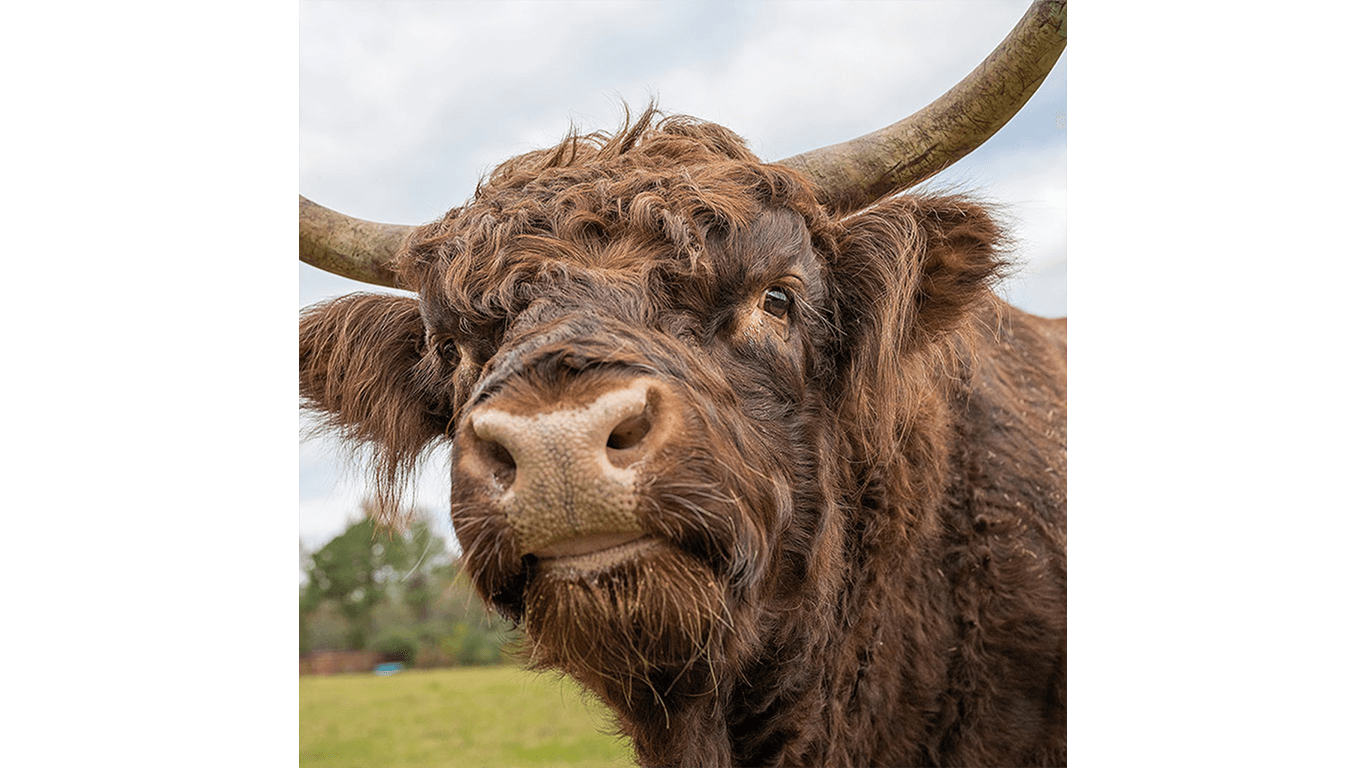
AGRICULTURE, RURAL LIVING
Sanctuary of Second Chances
A place where Otis the bull is one of many works of heart.

AGRICULTURE, FARM OPERATION
A Lesson in Resilience
A Kansas farm endures despite life-altering tragedy.

